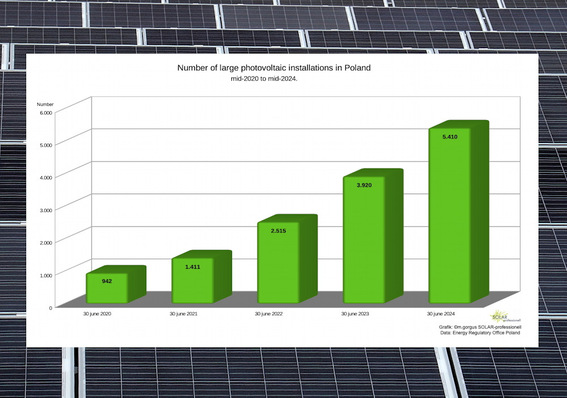Early development with political support
Between 2010 and 2015, some Central and Eastern European countries saw their first waves of solar expansion, largely due to government support programmes. Countries like the Czech Republic and Bulgaria introduced attractive feed-in tariffs, sparking a PV boom, though this subsided once the subsidies ended. In Poland, expansion was initially modest due to a lack of national support programmes and the dominance of coal in the energy market. In the Western Balkans and Ukraine, the solar sector also began to take shape, mainly through large-scale projects or pilot plants.
Also interesting: Stellantis decarbonises polish plants with solar power and storage
Greater momentum from 2016 after EU integration and lower costs
Starting in 2016, falling module prices, growing environmental awareness and stronger integration with the EU triggered new momentum across many Central and Eastern European countries. Poland became one of the fastest-growing PV markets in Europe, bolstered by the subsidy programme “Mój Prąd” (“My Electricity”), which helped households build solar installations. Hungary and Romania increased investments in solar parks, while Slovakia and Croatia developed a decentralised market with small to mid-sized installations. Even non-EU countries including Ukraine advanced their solar expansion, sometimes assisted by foreign investment.
Also interesting: Grzegorz Rabsztyn: “The EIB is playing a key role in supporting renewables and grid development”
PV key to energy plans in many countries
In 2025, photovoltaics are by now well-established across most countries in the region. Poland leads with over 20 gigawatts of installed PV capacity by the end of 2024, followed by Romania, Hungary and the Czech Republic. Large-scale systems are increasingly being developed in Serbia, North Macedonia and Albania, often in partnership with Western or Chinese investors. The PV boom is driven by not only lower costs for technical components and EU support measures, but also the desire for greater energy sovereignty in response to the energy crises of 2022 and 2023. Decentralised energy systems have proven more resilient than centralised equivalents in crisis situations. In addition, increasing pressure from the EU to phase out fossil fuels is accelerating the push for decarbonisation.
Also interesting: PV wholesaler SegenSolar joins growing wave of companies entering Eastern European markets
Energy future with expansion potential and challenges
The future is promising for photovoltaics in Central and Eastern Europe. There is significant potential in terms of available land, high solar radiation, in particular in the south, and technological advances such as agri-PV and energy storage solutions, all of which offer opportunities for regional energy supply. Nevertheless, challenges remain: bureaucratic hurdles, unclear permitting processes and partially outdated power grids are slowing expansion, and there is a particular need to modernise the electricity grids to reliably integrate decentralised PV systems.
Market gaining momentum
Over the past fifteen years, photovoltaics in Central and Eastern Europe have developed from a marginal phenomenon into a key technology. Despite regional differences, the trend is clear: solar energy will play a major role in the region’s future climate-neutral and independent energy supply. In the end, photovoltaics offer not only tremendous ecological benefits but also substantial economic potential – both for the PV industry and for consumers. (mg)








